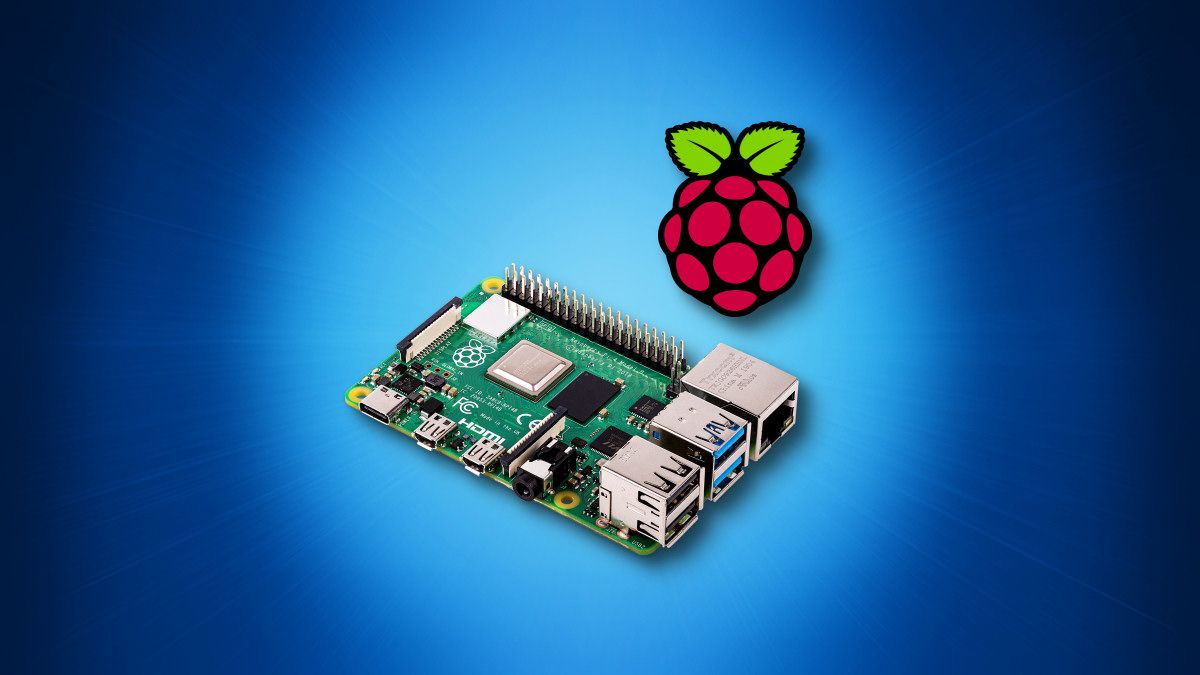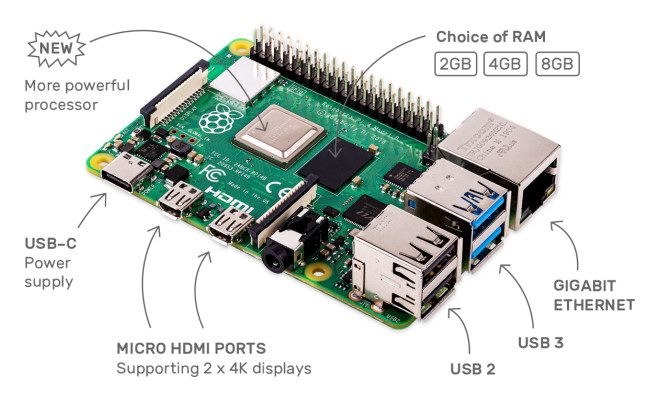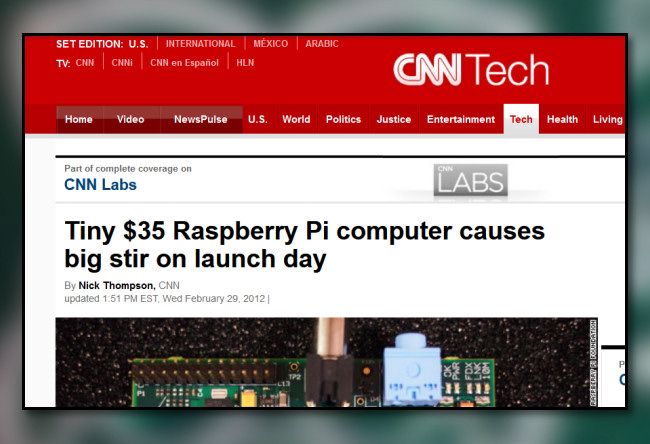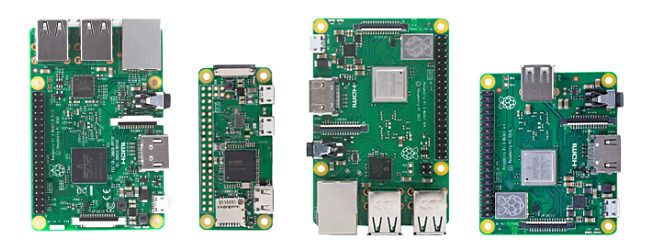Quick Links
The Raspberry Pi single-board computer debuted February 29, 2012. Since then, it's become a worldwide phenomenon, powering a wide range of hobbyist projects and commercial products alike. Let's take a look at what makes the Raspberry Pi series special---then and now.
The Origins of the Raspberry Pi
While working in the computer science department at St. John's College in Cambridge, U.K., circa 2006, Eben Upton noticed a drop-off in computer science student admissions. He noticed a general knowledge decline as well and suspected it was due to the lack of an easily accessible home computer like those in the 1980s that encouraged kids to jump in and learn computer programming.
After getting a job working as a SoC architect at Broadcom in Cambridge, Upton dove into the project to create a low-cost computer that would encourage kids to program. The goal was to make the computer as inexpensive as possible while making it open to both tinkering and serious development. The computer board would also integrate a GPIO port to make it easy to integrate the board into custom hardware projects.
Upton and a small team of volunteers created the Raspberry Pi, named after a reference to classic fruit-named computers and the Python programming language. The compact, low-cost design benefited greatly from SoC technology developed for mobile phones and set-top boxes. Instead of chasing profits as an end unto themselves, Upton rolled the resulting design into a charity called the Raspberry Pi Foundation, which oversees the development of the Raspberry Pi hardware and handles the intellectual property involved.
The Price Turned Heads The Most
Upon launching in 2012, the Raspberry Pi received ample attention in the press for being a $35 computer, which was astounding for a single board packed with capabilities such as HDMI graphics, sound, USB support, Ethernet networking, and more. It could run a full Linux distribution, making it a very capable machine for its size and low power requirements.
Future models of Pi continued the trend of impressively low prices, such as the Raspberry Pi Zero originally retailing for $5. The Raspberry Pi could achieve these stunningly low prices by being sold with a razor slim margin as a completely bare-bones product. You need to buy or provide accessories such as a case, power supply, HDMI cable, memory card, keyboard, mice, and a display to make it work.
Whatever the price, the Raspberry Pi has been a breakthrough success since the beginning. Its first production run sold out within hours of its launch, and the original models sold over a million units within a year. As of 2021, over 40 million Raspberry Pi boards have sold worldwide.
6 Great Things About Raspberry Pi (Then And Now)
Over the past decade, the hardware for the Raspberry Pi has improved and changed shape, but these six things---the best things---about the Raspberry Pi project have remained the same.
- It's Cheap: Historically, prices for the bare Pi boards have ranged from $25-$45, with some like the Zero going down to $5. Even with some recent price increases due to chip shortages, the Pi series is still a bargain. Obviously, once you price in the cost of accessories, the actual price for a working Pi system (without a monitor) can be closer to $150, depending on what you already had on hand when you started.
- It's Flexible: You can use most Raspberry Pi products as components in any project without significant or expensive licensing restrictions.
- It Has Broad Support: Many people and organizations maintain software for the Pi, including applications and custom OS installations. Also, the Raspberry Pi Foundation has committed to supporting software updates on its legacy (discontinued) hardware until 2026.
- It Has Great Documentation: Aside from extensive community documentation projects, the Raspberry Pi Foundation publishes detailed technical information and design files for free.
- It's Partially Backward-Compatible: While not perfect, when staying within the Raspberry Pi series, there's some level of software backward compatibility between older and newer models. Also, many of the form factors (B, A+, Zero) tend to stay the same or similar over time so they can often work with older or similar-sized cases or installation applications. And the GPIO pinout between models remains the same, so newer boards can often be drop-in replacements in certain projects.
- It's For a Good Cause: Unlike some for-profit businesses, the Raspberry Pi Foundation is devoted to supporting computer education and encouraging kids (and adults) to learn to program and develop their own custom projects. This alone is a great reason to stay in the Raspberry Pi ecosystem.
Models of Raspberry Pi Through the Years
Since 2012, the Raspberry Pi Foundation has released over a dozen different models of the Raspberry Pi computer, with computational power and capability generally increasing over time (with the exception of smaller units designed to use less electricity). Here's a look at the evolution of the Pi series over time.
- Raspberry Pi 1 -- Model B (2012), Model A (2013), Model B+ (2014), Model A+ (2014): The original Raspberry Pi models shipped in various small form factors with the BCM2835 SoC and either 256 MB or 512 MB of RAM. The Model B and A boards (with introductory prices at $35 and $25, respectively) included an RCA composite video jack as well as HDMI. None of these models supported Wi-Fi or Bluetooth onboard, but the B models included Ethernet jacks. The original A and B models used 26-pin GPIO, but that increased to 40-pin with the B+ and A+ in 2014. When released, the Model A+ was the smallest Pi at the time.
- Raspberry Pi Compute Module -- 1, 3, 3 Lite, 3+, 3+ Lite, 4, 4 Lite (2014-2020): The Compute Module range mirrored the main Raspberry Pi releases in capability but packaged them in small form factors (removing most connectors) designed for industrial and embedded applications.
- Raspberry Pi 2 -- Model B (2015): The Pi 2 upgraded the SoC to a BCM2836/7 and included 1 GB of RAM, Ethernet, and a 40-pin GPIO. Still no onboard Wi-Fi or Bluetooth.
- Raspberry Pi Zero -- Original (2015), W (2017), 2 W (2021): Originally retailing for a mere $5, the Pi Zero shrunk the Pi series down to half the size of the previously-smallest Model A+ and included a BCM2835, 512 MB of RAM, and Mini HDMI and Micro USB ports for ultra-compact projects. The Pi Zero W improved on the earlier Zero by including onboard Wi-Fi and Bluetooth connectivity. The Zero 2 W added a new RP3AO SoC that increased performance dramatically while keeping the same compact size.
- Raspberry Pi 3 -- Model B (2016), Model B+ (2018), Model A+ (2019): The Pi 3 utilized a BCM2837A0 or BCM2837B0 SoC and 512GB or 1 GB of RAM in two form factors. They also included onboard Wi-Fi and Bluetooth support for the first time in the series, and the Model 3 B+ supported Gigabit Ethernet for the first time as well.
- Raspberry Pi 4 -- Model B (2020): The Pi 4 utilized the 64-bit BCM2711 SoC with anywhere from 1 to 8 GB of RAM in the Model B (installed in the factory) for maximum flexibility. The models also included Gigabit Ethernet, USB 3.0, dual-band Wi-Fi, and Bluetooth.
- Raspberry Pi 400 (2021): The Pi 400 charted new territory by including a specially designed board (with the BCM2711 SoC, same as the Pi 4, and 4 GB of RAM) that fits inside a compact keyboard housing, with an integrated design similar to classic 1980s computers like the VIC-20 or the ZX Spectrum.
- Raspberry Pi Pico (2021): The Pi Pico microcontroller board took the Pi series to dramatically smaller spaces and lower prices ($4 MSRP) with a tiny design for hobbyist applications similar to an Arduino. It utilizes an RP2040 microcontroller chip (itself sold as a standalone product for embedded applications) and can be programmed in C or MicroPython.
The Possibilities are Endless
With several board models available (including kits to get you started), 40 pins of I/O, and support from the open-source software community, the number of things you can do with a Raspberry Pi are uncountable. If you just do a Google search for "Raspberry Pi project," you'll see thousands of interesting results.
Still, we've made a few attempts at listing some of the coolest projects over time. Our sister site Review Geek has also published their favorite amazing, fun, and useful Raspberry Pi projects. As of this writing, there are some shortages of Raspberry Pi units due to global chip supply issues, but once they're ironed out, expect Raspberry Pi prices to be relatively low and reasonable again.
Whatever you end up doing with your Pi, we hope you have fun. Happy Birthday, Raspberry Pi!




